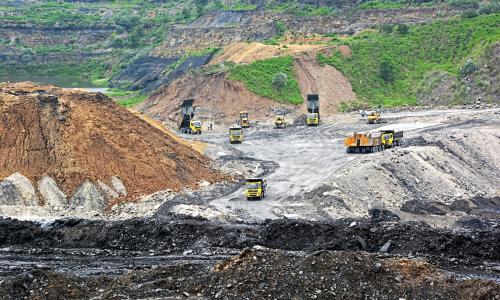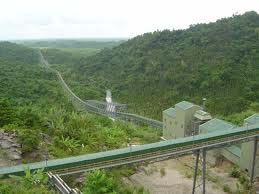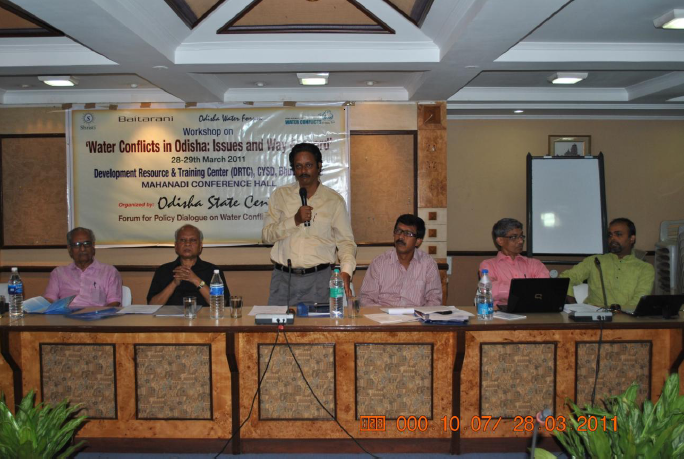
India: A mineral rich country
Mining is a significant economic activity in India, and we produce roughly 100 minerals - metallic (ferrous and non-ferrous), non-metallic and fuels/ energy minerals. Our metal and mining industry comprises of over 3100 mines (D R Khullar). In 2010, the costs of these mines were estimated $106.4bn (£68.5bn). (http://www.bbc.com/news/world-asia-india-18438622) The mining sector contributes to 2.6% of India’s GDP (Press Information Bureau, GOI, Revised Estimates, 2011).
The number of mines which reported mineral production {excluding minor minerals, petroleum (crude), natural gas and atomic minerals} in India was 3108 in 2012-13. Out of 3108 reporting mines, maximum number of mines were located in Andhra Pradesh (583) followed by Rajasthan (374), Gujarat (350), Madhya Pradesh (300), Tamil Nadu (281), Jharkhand (280), Odisha (175), Chhattisgarh (165), Karnataka (160), Maharashtra (139) and West Bengal (121). These 11 States together accounted for 93.92% of the total number of mines in the country in 2012-13 (Annual report-2012-13, Ministry of mines, Government of India).
India is the third largest producer of iron ore & coal and the fifth largest producer of bauxite in the world. For mining solid minerals like coal, open cast and underground mines are developed while; drilling and pumping methods are developed for the liquid and gaseous fuels. More recently, India has witnessed some of the worst human rights violations and scandals related to mining. The government of India have permitted many private companies in allocating forest and environmental clearances in last two decades.
Between “1993-94 and 2005-06, the mineral industry had been growing at a rate of 10.7 per cent”. [Source: Indian Minerals Yearbook 2005, Indian Bureau of Mines, Nagpur, pp 11-4] India has both small and large mines. Mineral processing industries have their captive mines (bauxite, limestone, iron ore, etc.). A few public sector and private sector companies dominate the mining industry. Illegal mining is also common, and in the last few years, there have several mining swindles like the case of iron ore mining in Bellary.
Policy and legal framework related to mining in India
The first act related to mining in independent India enacted in 1957 – The Mines and Minerals (Development and Regulation) (MMDR) Act, 1948. The MMDR Act was amended four times, the first two times to increase government control and the next two times to reverse it and attract private investments. The rules under the Act comprised of – the Mineral Concession Rules (MCR) and the Mineral Conservation and Development Rules (MCDR). Another amendment to the MMDR came in 1999 after a committee reviewed the Act. A number of changes were brought in through this like doing reconnaissance before prospecting and granting of a Reconnaissance Permit (RP). More powers were given to the state government, and the area restrictions liberalized.
In 1993, the government of India announced A National Mineral Policy (NMP) to facilitate Foreign Direct Investment (FDI). In 2006, the Government constituted a High Level Committee (HLC) for facilitating best international practices in mining industries and for preparing mining code. The Hoda Committee simplified the procedures for granting mining concessions and in fact diluted the environmental clearance processes to attract investments. The government of India reviewed and streamlined the procedures and processes for issuing Reconnaissance Permits (RPs), Prospecting Licenses (PLs) and Mining Leases (MLs).
The new Mines and Minerals (Development and Regulation) Bill, 2011 was also drafted with the idea of repealing the existing Mines and Minerals (Development and Regulation) Act, 1957. Environmental and forest clearances are mandatory, so these laws to overrun the mining sector. Impact of Mining on Environment: Mining is one industrial activity that affects the environment significantly. Both Government, as well as Companies, has environmental guidelines for mining operations.
Companies blatantly ignore the carrying capacity of the environment by not adopting scientific mining methods while undertaking their activities. Water pollution especially groundwater contamination due to mining is a serious issue as mining operations intersect the water table of the mined area. Large amounts of suspended solids are common in groundwater near the mined areas because of ore-washing and dumps. Companies are supposed to build settling ponds to manage the wastewater but rarely do so.
Ideally, companies should go for zero discharge, i.e., recycle and reuse wastewater. Land-use change analysis was carried out in Singrauli district, Madhya Pradesh from 1978 to 2010, highlighting the severity of mining as a forest change driver. Similarly, in many parts of India, extensive mining activities have lead to significant deforestation in the country. http://www.currentscience.ac.in/Volumes/105/11/1492.pdf
Land degradation is the inevitable result of any form of mining, particularly opencast mining, which thoroughly disturbs the physical, chemical, and biological characteristics of the soil and alters the socioeconomic features of the area. http://www.envfor.nic.in/soer/2001/ind_land.pdf
Mining-Induced Displacement and Resettlement
In India, mining development displaced more than 2.55 million people between 1950 and 2000. The main problem in India seems to be antagonism between local administrations and tribal peoples regarding land ownership. Land inhabited by many generations is the most significant area of economic, social, and cultural reference. The fusion of human and land is highly visible in the case of indigenous and tribal people who have limited adaptive mechanisms to the new reality. ( T.E. Downing, Avoiding New Poverty: Mining-Induced Displacement and Resettlement, IIED and WBCSD, London,2002, Research Paper No. 58, pp. 3; S. Somayaji, S. Talwar (eds.), Development-induced Displacement, Rehabilitation and Resettlement in India, Routledge, 2011, pp. 94)
Health hazards due to mines
Numerous studies suggest that there are different health related illness related to mining activities and most of them are under-reported. Most of the patients do not report the illness due to fear of losing his or her job or other job-related benefits. People working and living around mining areas are prone to occupational diseases like lung disorders, neurotoxic disorders, noise induced-hearing loss, skin disorders, occupational cardiovascular diseases, reproduction disorders, a malignant pleural neoplasm, etc. http://www.cdc.gov/niosh/mining/userfiles/works/pdfs/shiim.pdf
Impact of sand mining on the river system
Sand mining is a major threat to our rivers and can destroy its biodiversity, pollute it and cause erosion. The boom in the construction industry has led to increased demand for building materials like sand. Sand mining alters the ability of the river to pass water, blocks the river flow, causes channel instability and damages the entire river system. Excessive sand quarrying to meet the demands of the construction industry is destroying local irrigation systems in Anantapur and other parts of the country. It also damages the nearby groundwater systems, transforms riverbeds into large deep holes that lead to decline in the water table in nearby areas. Turbidity at the sand mining site can alter the river water quality. In coastal areas, sand and gravel mining can lead to seawater intrusion.
Mining of groundwater: Case of Coca-Cola
Cold drink and mineral water companies like Coca Cola and Pepsi are overexploiting and polluting our water resources. The sector has been in a blaze of criticism for the reportedly undesirable environmental impacts its bottling plants have. The companies adopt poor production practices that involve drawing of enormous amounts of public groundwater thereby depriving local communities of water for their livelihoods. The companies have never been held liable either criminally or financially for their operations in water-starved areas of India. Not only that following the expose by Centre for Science and Environment about toxins in Cola, tests by Central Government pointed that Colas had a high concentrations of pesticides and insecticides. These drinks were unfit for human consumption and had about thirty times the toxins allowed as per European Union standards.
Mine closure plan
The Indian Bureau of Mines has clearly laid out guidelines about mine closure plan. It is necessary for all present mining lessees to provide a "Progressive Mine Closure Plan" along with the agreed financial sureties within 180 days from the date of notification of the mine. The mining lessee has to submit "Final Mines Closure Plan", a year before the proposed closure of the mine and the mine closure activities begin right from the onset of the project itself. The mine closure plan has to provide details for the measures for protecting the existing surface and groundwater bodies in the mine lease areas. The above closure plan should also provide measures to protect ground water contamination from leaching, and measures to prevent acid mine drainage. However, in India, local communities are never involved in planning and execution of these plans. There is a dearth of good examples of reclamation and rehabilitation of mined areas in India.
/topics/mining







 The report submits the idea that proposal will go a long way in reducing poverty and deprivation in the mining affected areas. It states that the mining industry’s opposition to the proposal has no basis - statistics prove that sharing profits will not dent the industry’s profitability.
The report submits the idea that proposal will go a long way in reducing poverty and deprivation in the mining affected areas. It states that the mining industry’s opposition to the proposal has no basis - statistics prove that sharing profits will not dent the industry’s profitability.